MARKET PERSPECTIVE
By J Mulraj
April 19-25, 2025
…endless wars, created by politicians?
Image Created by Bing
Politicians create problems, while scientists, using technology, provide the solutions!
Politicians have created conflicts, to feed the Military-Industrial-Complex (MIC), the only one to benefit from them. The Ruso- Ukraine war, for example, should never have been allowed to start. From Russia’s viewpoint, NATO provoked it into invading Ukraine due to its insistence on granting membership to Ukraine (despite NATO having agreed with former Russian President Gorbachev that it wouldn’t expand eastwards). According to the narrative of the Collective West, Russia seeks to conquer territory to regain it’s previous glory. Is this narrative credible?
Russia’s land area is 17.1 million square kms. It’s population is 143.8 m. So 8.4 persons occupy 1 sq. Km. In USA 34.1 persons occupy 1 sq km. So the argument that Russia seeks to expand through conquest seems illogical, given that adding territory makes it even more difficult to hold on to it’s existing, vast, territory.
The Ruso-Ukraine conflict has lasted for over 3 years, resulting in huge casualties/injuries. Several Ukrainians have emigrated, and the fertility rate has fallen far below that required to maintain a society. Trump is trying to get both parties to reach a negotiated end to a futile war. Few other world leaders seem willing to end the conflict; in essence they are outsourcing body bags to the warring parties by egging them on to fight.
It’s the same with other ongoing conflicts, whether it’s the Israel-Hamas one, the Sudanese conflict, or others. Continuous global tensions prevents us from mankind from achieving the kind of progress, described below, that would provide it with a cornucopia of resources.
What voters have to decide on is which future they wish for. A future of endless wars and destruction, funded by spiraling debt, led by a myopic polity, OR a future of (1) cheap, clean, limitless energy, (2) of affordable, environmentally friendly, mobility, (3) abundant food and (4) limitless, efficient labour using humanoid robots?
Investors ought to read the reports available, several for free download, on www.rethinkX.com. This is a think tank founded by Tony Seba, a thought leader in the study of technology disruptions, and other founders. They use cost-curves to forecast timelines when existing systems will be disrupted by emerging technologies.
Take energy: The cost of renewable, clean, energy generated by solar and wind is already lower than the traditional coal, gas and nuclear systems. As per this research on page 9, the cost of setting up capacities have, since 2010, fallen by 80% in solar, 45% in wind and 90% in batteries. Batteries are needed to store the energy because sun and wind are not available 24X7. By 2030, their costs will fall a further 70, 40 and 80% respectively!
The report says that a 100% SWB (Solar, Wind, Battery) system can completely replace the existing oil, gas, nuclear system, and can provide continuous power throughout the day (because of adequate storage). This is in most regions of the world, including India, which is blessed by sunshine.
Hear this – by 2030, it’s possible to build a 100% SWB system in USA, including surplus, or what they call as super power, for an investment of $ 2 trillion, that will provide clean energy for 3 cents/ kWh! Compare this with average cost in USA of 7 to 42 cents per kWh.
The super power, generated at low marginal cost, will spawn the birth of new industries, simply because the cheap cost will make it viable. There will be enough power capacity to meet the needs of AI.
Investors need to study this for fear of disruption of utilities like NTPC, Tata Power and others, or input suppliers like Coal India. Maharashtra recently announced the setting up of thorium based modular nuclear reactors, with Russian collaboration, the rationale for which might also be evaluated against a 100% SWB system.
Put the $2 trillion in context.
The US polity spent this amount in each of two recent wars, Iraq and Afghanistan. Nothing positive was achieved (except enriching the MIC). On the contrary, the Iraq war spawned ISIS and the Afghan war spurred the Taliban.
Instead, the US could have solved it’s energy shortages by building a 100% SWB system at the cost of forsaking one of the wars.
Or take mobility: The convergence of the new EV (electric vehicle) technology, the brilliance of FSD (full sell driving) and the business innovation of TASS (transportation as a service) will lead to a reduction in cost of transportation which is 4 to 10 times cheaper than current costs!
EVs have far fewer moving parts, about 10%, than ICE (internal combustion engine) and thus much lower operating costs. Once the purchase cost of an EV becomes lower than an ICE (it already is, for some Chinese EVs) the disruption of the traditional ICE vehicle manufacturers like Toyota, Ford, GM, VW, Mercedes etc will be complete. In India Maruti, Tata, Mahindra etc. will be impacted. Truck manufacturers will also get disrupted, over time, with the advent of EV commercial vehicles like Tesla’s cyber truck.
Enter FSD, or autonomous vehicles whic are driverless. Several cities in USA are expected to grant regulatory approval for FSD. Initially, drivers may be needed, until confidence builds up that FSD works. In fact, it works better than manually driven vehicles, with fewer accidents. This will reduce auto accidents and, so, insurance costs. Stocks of legacy automakers and auto insurance providers will be impacted. The US department of Transportation just announced a nationwide regulatory framework for FSD vehicles, so there can be a quicker rollout, perhaps in 2025.
Enter TASS (technology as a service). Basically, an UBER like service, which provides rides on demand, at lower costs, by utilizing the spare capacity of vehicles. So, an FSD vehicle owner could, after being dropped off at work, offer it to a TASS service for, say, 8 hours. The TASS assumes remote control over the vehicle, instructing it to pick up/drop customers, with the revenue being shared by the owner and the TASS. In essence, an FSD vehicle, combined with TASS turns the car from a cost-centre into a profit-centre!
The next step in this mobility revolution would be robo taxis. Companies like TESLA would become fleet owners, providing rides virtually 24 X 7 (no drivers), thus cutting the cost per mile ridiculously low.
Take food: Two technologies have been developed to disrupt the food industry, viz. precision fermentation (PF) and cellular agriculture (CA). (See https://www.rethinkx.com/food-and-agriculture). ‘Precision fermentation is a process that allows us to program microorganisms to produce almost any complex organic molecule’. PF can be used to make proteins five times cheaper than prevailing animal proteins by 2030, and 10 times by 2035. For example, ‘the DNA of a single soy plant or chicken will be enough to create an unlimited quantity of soy or chicken protein’. The huge cost reduction will displace the industrial animal farming industry.
Animal farming consumes around 70% of agricultural land and water. If protein can be supplied using PF and CA at 1/5th to 1/10th the cost, the industry can’t compete. So the 70% agricultural land/water resources will be freed, and be replaced by localized PF and CA operations. Cellular agriculture is the production of agricultural products, like meat, seafood, milk and eggs with minimal or no use of animals.
The land released by the disruption of animal farming would be an area equal to USA, China and Australia combined! It could be used for reforestation, boosting carbon capture and tackling environmental issues. The variety of nutritious foods produced using PF and CA at far lower prices will also contribute to a healthier society.
Lastly, take labour: Companies like Tesla have already produced humanoid robots, or robots which can perform tasks like humans. They will be able to join the workforce, able to perform almost any task humans can, but far more cheaply and efficiently. A human takes 9 months to produce, a further 21 years to educate (whilst money is spent on his food, clothing, shelter and education) before he joins the workforce. A humanoid robot could be produced in days, not have any spend on raising or training it (done via software) and join the workforce on day 1.
Unlike humans, a robot can work 24 X 7, take no breaks (perhaps an occasional one for maintenance), does not protest, take leave, vacations or bonuses. As a result, it’s cost will be $ 10/hour when introduced ($28.16/hour for US labour), which will drop to $1/hour by 2035 and to $ 0.10 by 2045.
What this means is that if a country wants to increase it’s labour force, or it’s army, by, say, 1 million, it can do so in months, not in decades. In manufacture, productivity will shoot up, as also quality, because robots will make no mistakes. The productivity boost will result in everyone getting a basic high income, not a basic minimum income.
So, the choice humans have to make s whether they would choose to be led, like rats, by a Pied Piper politician, or whether they’d prefer to be guided by scientists, using technology, to a future of abundance.
It seems a no brainer.
As of now, the Ukraine war doesn’t appear to be headed for a Trump led negotiated end. Zelenskyy says he will not agree to ceding control of Crimea to Russia. In any war the loser has to pay the price; to the victor goes the spoils. It suggests that Zelenskyy feels he can militarily regain control of Crimea. Sadly, there are political leaders willing to egg him on with weaponry, which truly makes one lose complete faith in their intelligence!
Encouragingly, voters have booted out, in elections, many EU leaders who encouraged the war (Boris Johnson,, Schulz, Macron, who failed to get a majority, Mario Dragi). They do not wish to be the rats following the Pied Piper politicians.
Last week saw a dastardly attack by terrorists on innocent tourists in Kashmir, killing several. A retaliatory strike may ensue. The week also saw a softening of his stand on tariffs by Trump, and on his withdrawal of threat to fire Fed Chair Powell. Stock markets rallied. With Trump, though, one can expect policy zigs after a zag.
Last week the BSE Sensex rose 656 points to close at 79212.
It’s likely that the utter folly of exorbitant, unilaterally imposed, tariffs has dawned, belatedly, on Trump. There’s a theory that says Trump’s intention was to crash stock markets (which happened) in order that money exiting them would flow into (safer) US Treasuries, raising their prices and lowering yields, so that the US debt can be rolled over at lower rates.
It didn’t work. Apparently some hedge funds made hugely leveraged bets on T Bills, which failed. Lenders made margin calls, to meet which the hedge sold the T Bills, leading to a fall in their prices instead of the rise Trump gambled on, with his tariff policy. The Fed is contemplating a $ 2 trillion bailout for the greedy hedge funds. Incidentally, the same amount, $ 2 trillion, could be used to create a SWB system that would create clean, dirt cheap, and surplus energy.
Politicians who don’t see the stupidity of their policies need to be sent a message by the electorate.
Comments may be sent to jmulraj@asiaconverge.com








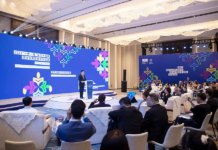


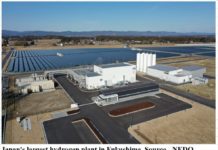
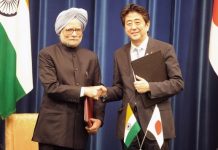








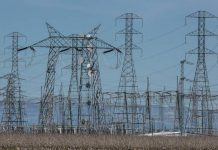

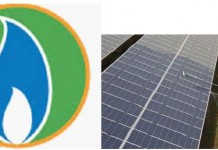


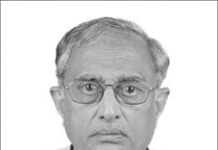

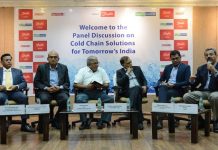
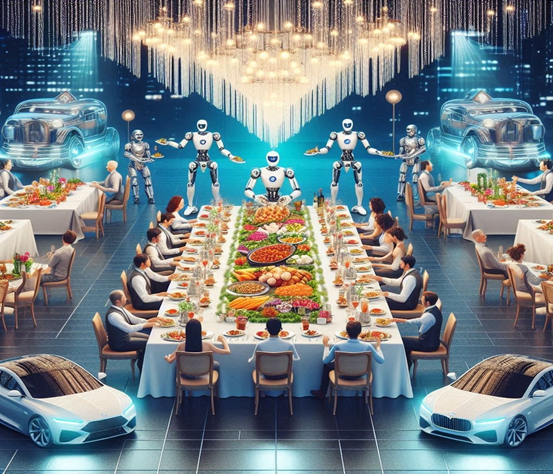


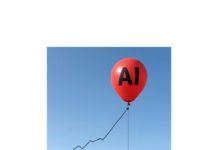








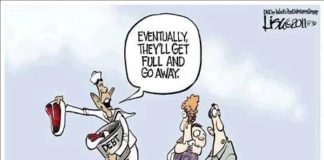
COMMENTS